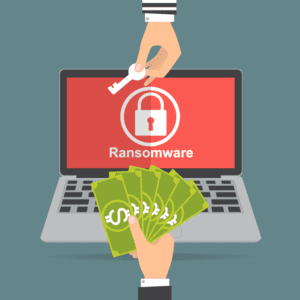There may be times when a computer infection elicits a chuckle before driving you to tear your hair out. Here, I’ll be discussing a few examples of weird malware I’ve come across (not from personal experience, thankfully). Keep in mind that some of these started out merely as a prank between friends—meaning it doesn’t take a criminal mastermind of a programmer to destroy your computer if you’re not cautious.
Cookie Monster
The Cookie Monster program was written in the late 1960s and is credited as being the world’s first computer virus. Students at Brown University created it just as a way to annoy their friends. When opened, it completely froze the computer and incessantly demanded cookies. Sounds pretty similar to modern-day ransomware, doesn’t it? But the user could unlock their computer easily—they just had to type in “cookie” to placate the malware and regain control.
Ika-Tako
Deriving its name from the Japanese words for “squid” and “octopus,” the Ika-Tako virus made headlines in 2010 when it infected between 20,000 and 50,000 computers. It disguised itself as music files; when users downloaded the files, the virus infected all the files stored on the user’s computer. Then it swapped all these files with pictures of an orange cartoon octopus.
The creator of Ika-Tako, Masato Nakatsuji, was arrested for property destruction. He had previously written the Pirlames Trojan that also destroyed files, but instead displayed images from the well-known anime Clannad. Pirlames led to a two-year prison sentence for violating copyright laws. Nakatsuji wrote Ika-Tako while on probation to “test how much [his] computer programming skills since the last time [he] was arrested.”
Rensenware
Rensenware, like Cookie Monster, gives the user a way to regain control—but it’s much, much harder to do.
This form of ransomware takes its name from the 12th installment of the wildly popular Touhou game series, Seirensen (in English, Undefined Fantastic Object). Instead of paying a ransom, the user has to score 200 million points on Undefined Fantastic Object’s hardest difficulty level, aptly called “lunatic mode.”
As a longtime appreciator with the Touhou games, I found this malware particularly interesting, though I know I would never stand a chance at unlocking my computer if infected by Rensenware. The games revolve around dodging thousands of deadly projectiles that come at you in various patterns, and on harder modes, they often completely obscure the screen. To get an idea of how difficult it would be to unlock your computer from Rensenware, check out Undefined Fantastic Object’s final stage on lunatic (the boss fight starts at 1:55):
Note that this video shows a perfect (no deaths) run, but it still doesn’t hit 200 million points.
The creator of Rensenware wrote the ransomware as a joke. He fell asleep after uploading it to GitHub, and awoke to find it had spread. It even infected his own computer. Asked whether he could score 200 million points, he replied, “Uh, oh… nope.” He immediately wrote software that neutralized Rensenware and released it to GitHub.
Lesson Learned
The takeaway here is that something you come across online doesn’t have to look sketchy to cause your computer harm. If you know any skilled programmers who are prone to boredom… be wary of any emails they send your way!
For more cybersecurity articles, follow @Plixer on Twitter.



